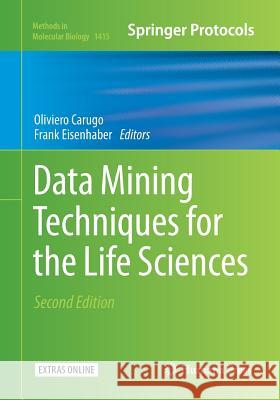Data Mining Techniques for the Life Sciences » książka
topmenu
Data Mining Techniques for the Life Sciences
ISBN-13: 9781493980819 / Angielski / Miękka / 2018 / 552 str.
Data Mining Techniques for the Life Sciences
ISBN-13: 9781493980819 / Angielski / Miękka / 2018 / 552 str.
cena 429,96 zł
(netto: 409,49 VAT: 5%)
Najniższa cena z 30 dni: 424,07 zł
(netto: 409,49 VAT: 5%)
Najniższa cena z 30 dni: 424,07 zł
Termin realizacji zamówienia:
ok. 20 dni roboczych.
ok. 20 dni roboczych.
Darmowa dostawa!
Kategorie:
Kategorie BISAC:
Wydawca:
Humana Press
Seria wydawnicza:
Język:
Angielski
ISBN-13:
9781493980819
Rok wydania:
2018
Wydanie:
Softcover Repri
Ilość stron:
552
Waga:
0.96 kg
Wymiary:
25.4 x 17.78 x 2.92
Oprawa:
Miękka
Wolumenów:
01
Dodatkowe informacje:
Wydanie ilustrowane











